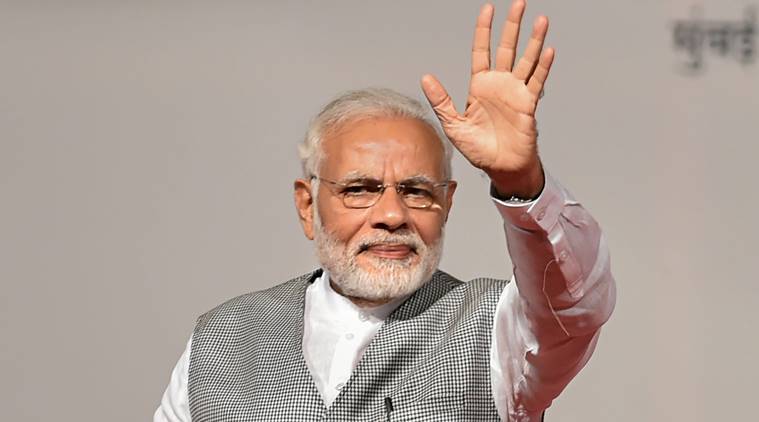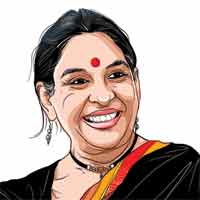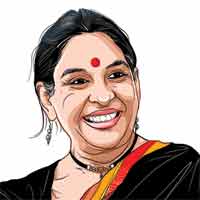Jobs, lost and found
Employment generation is the elephant in the room. A focus on handicrafts would go a long way in fulfilling Modi government’s promises

Prime Minister Narendra Modi.
Ever since he became prime minister in 2014, Narendra Modi has talked about job creation as a sorely needed factor for India’s economic stability and growth. Yet, the subject remains the proverbial elephant in the room.
On August 15, 2014, the media reported: “Modi hoists the national flag… Skill development will be towards job creation and empowering the youth.” A year later, “Modi said there would now be an attempt at linking job creation with new investments. Proposed schemes would now impose the obligation of creating fresh jobs for every clearance given to investments”. In 2017, the reports quoted the PM as saying, “We are nurturing our youngsters to be job creators and not job seekers.” During the July no-confidence motion in the Lok Sabha, Modi replied to the criticism his government was facing over the unemployment issue by saying that over one crore jobs had been created over the past year. Finally, on August 15, he hinted at the need for a rethink of what “job creation” means.
We agree. There is a basket of livelihoods and knowledge, guided by culture, which fulfils all that government means when it says “jobs”. It is found as the self-employed traditional artisan sector. The “job creation” that has featured in speeches over the last few years is embodied in the millions of women and men whose wealth of skills gives us products both utilitarian and sustainable, and contributes to inclusiveness, respect, remuneration, rural wealth creation and eco-friendly solutions.
These are brought to us by households of many parts, engaged in cultivation or animal rearing, some retail activity, one or two members of which may draw salaries, and in which there is a household industry too, often a handicraft. If they are in plain view, why are they still neglected? Some of the neglect can be explained by the uncertainty about how many households of this description there are in India. We make guesstimates based on how a few agencies of the central government report their findings, and from the experience of those who have worked in the sector. Even so, the government is not blind to its size and strength. In its “Guide for Enumerators and Supervisors”, the Sixth Economic Census 2012-13 explained that it “included handicrafts with a view to reflect the huge contribution the artisan communities make to India’s economy”.
But the Economic Census did not scrutinise artisan communities as keenly as it did workers of other sectors. The experience of state handicrafts’ agencies and especially the cooperative crafts groups shows that these are probably included in the 13.1 million “establishments” enumerated by the 2012-13 Economic Census, which pursue activities relating to agriculture other than crop production and plantation. According to reports, NABARD’s All India Rural Financial Inclusion Survey 2016-17 has indicated likewise.
Some guidance (limited and hampered by unhelpful definitions) can be taken from the Census 2011, which has listed 6.2 million rural “occupied census houses” used as residences but which are put to other uses too (out of the total of 166.2 million), these being (in census jargon) “arts, entertainment and recreation” and “undifferentiated goods and services” both of which may include all kinds of activities not related to handicrafts, hand-weaves and village household industries.
Useful as it may be, poring through the minutiae of Census entries does not help tally what the Central agencies list. The programmes of the Khadi and Village Industries Commission (KVIC) are implemented through 4,601 registered institutions and involve more than 7,23,000 entrepreneurial units under the Prime Minister’s Employment Generation Programme and the erstwhile Rural Employment Generation Programme (now subsumed into the PMEGP), and also the Pradhan Mantri Rojgar Yojana. The KVIC alone claims through its programmes to have placed in employment (for 2016-17) 13.64 million people, a number that corresponds better with the most recent Economic Census than with Census 2011 data on workers.
However, that still leaves us with the sadly indeterminate impacts of programmes under ministries and agencies (textiles, agriculture, rural development) which deal with handicrafts and household industries.
What else is missing in the handicraft sector? Advances in appropriate technology to remove drudgery are few and far between, raw materials at moderate rates are seldom secured, lack of upgraded design for greater acceptability and utility, and — most important of all — access to marketing opportunities. The e-marketing platforms are mystifying oceans to a craftsperson with low or no IT skills. Most of these platforms serve youthful, educated middle-class entrepreneurs adept at both English and presentation skills. Even so, Dilli Haat alone is proof that once markets pitched at different levels are available, many shortcomings are tackled by craftspersons themselves.
For years, those invited to the Red Fort on August 15 have sweltered in the humidity and heat, fanning themselves with their invitation cards. Surely there was an opportunity here to connect “jobs” with tasteful utility at hand, and this writer proposed and assisted the government in the procurement of 1,000 bamboo fans from tribal Bengal which were provided this year to the VIP section. The next opportunity was Raksha Bandhan, for in 2017 during a ‘Mann ki Baat’ broadcast the PM spoke about wearing khadi rakhis instead of China-made ones (media went looking but found none). This lack of follow-up by concerned bodies to positive, simple suggestions, leads people to accuse the PM of running a “jumla sarkar”.
Innovation, a government watchword, abounds where there is natural material to work and knowledge to apply. Such ideas need committed support from the government, as much for fulfilling “job creation” and sustainable livelihoods as for mainstreaming the environmental service done by the handicraft sector.
Jaitly is a writer and founder-president, Dastkari Haat Samiti, and Goswami is a Unesco Asia facilitator on intangible cultural heritage
Jaitly is a writer and founder-president, Dastkari Haat Samiti, and Goswami is a Unesco Asia facilitator on intangible cultural heritage
For all the latest Opinion News, download Indian Express App
More From Jaya Jaitly
- Too Early to Say SariAnushka Sharma's Sabyasachi Banarasi at her Delhi reception started a conversation around the heritage weave. But the weavers have little reason to rejoice...
- Taxing the artisanThe voice of craftspeople must not be silenced in the transition to GST..
- A Very Special WomanA collection of writings offers a rare insight into the life of one of India’s most eminent but little remembered public activists..







































No hay comentarios:
Publicar un comentario